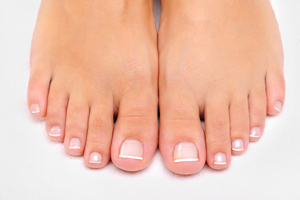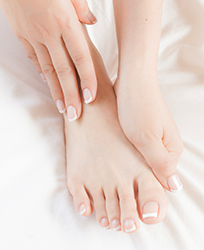 Ingrown toenails occur when the nail starts to grow into the flesh of the toe instead of over it. This is most commonly seen on the big toe, especially if you have curved or thick toenails. Anyone can suffer from an ingrown toenail at least once in their life, whether it is from ill-fitting shoes, injury or improper foot care.
Ingrown toenails occur when the nail starts to grow into the flesh of the toe instead of over it. This is most commonly seen on the big toe, especially if you have curved or thick toenails. Anyone can suffer from an ingrown toenail at least once in their life, whether it is from ill-fitting shoes, injury or improper foot care.
If you have an ingrown toenail, it is important that you take care of it as quickly as possible by visiting a podiatrist in Toronto. If you have diabetes, numbness in your toes or vasculitis, it is especially important you take care of the issue, because ingrown toenails could quickly turn from a minor annoyance to a serious complication.
What Causes Ingrown Toenails?
There are a few things that can lead to ingrown toenails, including:
- Wearing shoes that are too tight and force your toenails to crowd together
- Cutting your toenails too short or at an angle instead of straight across
- Injuring your toenail, such as breaking a portion off
- Having unusually thick or curved toenails
Options for Treating Ingrown Toenails
 Home remedies can be used to help alleviate the pain and discomfort of an ingrown toenail. To treat at home, you will need to moisten the skin and toenail and then lift the nail’s edge out from the skin. Use a piece of cotton between the toenail and skin to prevent it from settling back into your toe’s flesh. Each day, you will need to soak the nail and apply a clean piece of cotton.
Home remedies can be used to help alleviate the pain and discomfort of an ingrown toenail. To treat at home, you will need to moisten the skin and toenail and then lift the nail’s edge out from the skin. Use a piece of cotton between the toenail and skin to prevent it from settling back into your toe’s flesh. Each day, you will need to soak the nail and apply a clean piece of cotton.
If your ingrown toenail becomes infected, comes back after treatment or you suffer from a chronic condition such as diabetes, you should see a podiatrist for treatment. A podiatrist will be able to use one of three methods:
- Lifting and repositioning the toenail so that it no longer grows into the skin. You will have at-home care that you will need to perform. Your podiatrist may prescribe antibiotics if the toe appears infected.
- Partially removing the toenail. This is for more severe cases. Your doctor may need to trim away a portion of the ingrown nail. To alleviate the discomfort, a numbing agent may be used on the foot during the procedure.
- Removing the nail and associated tissue. For chronic ingrown toenail problems, your podiatrist may suggest removing a portion of the nail as well as the underlying tissue, known as the nail bed. This can prevent the nail from growing back.
It is important to treat ingrown toenails as soon as possible. Not only are they uncomfortable, but if left untreated, they could lead to infection or other serious complications.
Trust the experts at Comfort Stride’s foot clinic in Toronto to help treat your ingrown toenails. Call us at 647-989-7794 now to schedule an appointment.




